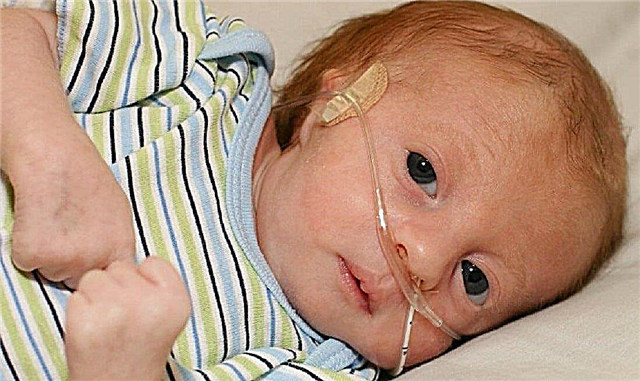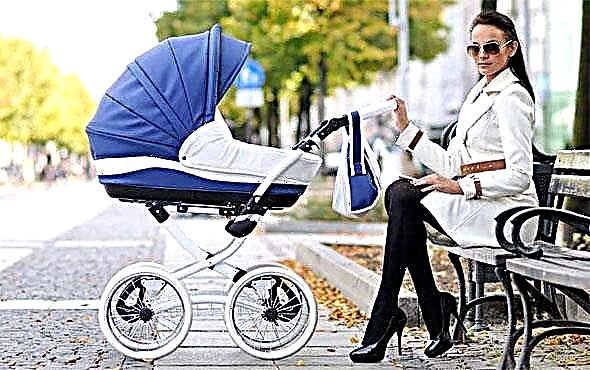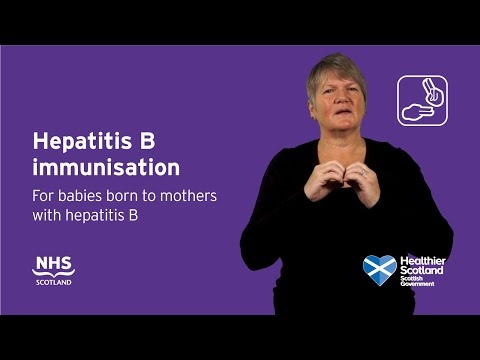Our body is a large and complex mechanism, the work of which depends on many factors. You can monitor his work by some indicators, including blood. For example, blood cells are eosinophils. They protect our body from foreign agents. How they do it, why eosinophids are elevated in a child, what eosinophilia in children says - will be discussed below.
Why does the body need eosinophils?
Each cell of our body performs its role. Now we will talk about eosinophils.
What are eosinophils?
Everyone knows that in our body there are red blood cells (red blood cells) and white blood cells (white blood cells).
But few people know that leukocytes are further subdivided into:
- cells containing granules in the cytoplasm. These include basophils, neutrophils, eosinophils;
- cells that do not contain granules in the cytoplasm. Representatives of this group are monocytes and lymphocytes.
Thus, eosinophils are a type of leukocytes that contain granules in their composition. What are these granules? These granules are found in the cytoplasm. Therefore, when cells are stained, it is they that give eosinophils a bright red color.
What do eosinophil granules contain? Eosinophils contain a number of substances that ensure the fulfillment of their functions. These include:
- major basic protein - contributes to the destruction of parasites due to its toxic effect;
- eosinophil cationic protein - also has toxic activity against helminths, suppresses the synthesis of antibodies, helps in interaction with other cells;
- eosinophilic peroxidase - promotes the oxidation of substances, as a result of which reactive oxygen species are formed. They, in turn, are able to expose the cell to death;
- eosinophil neurotoxin - shows its activity against viruses, activating cells of the immune system to develop an inflammatory response.
In addition to the fact that eosinophils have specific granules, these cells are capable of producing various signaling molecules. They are called cytokines. They ensure the functioning of cytokines in the focus of inflammation, participation in the activation of the immune system.

Synthesis site
All blood cells mature in the bone marrow. In the same place, eosinophil maturation occurs from the universal progenitor cell (Figure 1).

Fig. 1. Maturation of eosinophils.
A mature cell, a segmented eosinophil, enters the bloodstream. If young forms are found in the blood, this may indicate excessive destruction of eosinophils or the flow of a large number of signals to the bone marrow to stimulate the formation of these cells.
The bone marrow received a signal about the need to synthesize eosinophils, and after 4 days these cells wait for their turn to enter the bloodstream.
Eosinophils circulate in the blood for only a few hours, after which they go into the tissues and stand guard over order. They stay in tissues for about 10 - 12 days.
A small number of eosinophils are found in tissues that border the environment, providing protection to our body.
What are the functions of eosinophils?
Earlier it was already mentioned what effects eosinophils can perform due to specific granules in the cytoplasm. But in order for eosinophils to be activated, that is, to release the contents of the granules, a signal is needed. Basically, this signal is the interaction of activators with receptors on the surface of eosinophils.
The activator can be antibodies of classes E and G, the complement system, activated by the components of the helminth. In addition to direct interaction with the surface of eosinophils, mast cells, for example, can produce chemotaxis factor, a compound that attracts eosinophils to this site.
Based on this, the functions of eosinophils include:
- participation in an allergic reaction. In case of an allergic reaction, histamine is released from basophils and mast cells, which determines the clinical symptoms of hypersensitivity. Eosinophils migrate to this area and promote the breakdown of histamine;
- toxic effect. This biological effect can be manifested in relation to helminths, pathogenic agents, etc.
- having phagocytic activity, capable of destroying pathological cells, however, this ability is higher in neutrophils;
- due to the formation of reactive oxygen species, they show their bactericidal effect.
The main thing to remember is that eosinophils are involved in allergic reactions and the fight against helminths.
The norm of the content of eosinophils in the blood of a child
As mentioned earlier, eosinophils are not in the bloodstream for a long time. Therefore, healthy children should not have many eosinophils.
The numerical values of the norm depend on how the number of cells was determined. In old laboratories, the leukocyte formula is calculated manually, the result is given only in relative values, that is, in%.
Normally, in children under 4 years of age, the relative number of eosinophils should not exceed 7%. Over this age, the norm is the same as in adults - no more than 5%.
In modern laboratories, cells are most often counted automatically on a hematology analyzer, and only in exceptional cases are counted manually. When counting cells on the analyzer, the result can be displayed in the form of relative and absolute values.
The absolute number of eosinophils reflects the exact number of eosinophils per liter of blood.
The absolute values of normal eosinophils are presented in the table.
Table. The rate of eosinophils in the blood in children.
| Age | Absolute quantities |
| Up to a year | 0.05 - 0.4 * 10 * 9 / l |
| Year - six years | 0.02 - 0.3 * 10 * 9 / l |
| Over six years | 0.02 - 0.5 * 10 * 9 / l |
Data with normal values are given for review, you should not deal with decoding the result of the analysis yourself!
Indications for determining the level of eosinophils in the blood

Since eosinophils play an important role in allergic reactions and the fight against parasites, it is advisable to determine the level of these cells in the blood if these processes are suspected.
That is, the main indications for determining the level of eosinophils in the blood of a child may be:
- after eating some food product, itching began, dermatitis appeared on the skin, damage to the respiratory tract (cough, sneezing, laryngeal edema) and so on;
- headaches, poor perseverance of the child, insomnia may indicate the presence of parasites in him;
- low body weight with increased appetite may also indicate helminthiasis;
- the process of digestion of food is disrupted, accompanied by a change in stool, vomiting;
- stomach ache;
- signs of a deficiency in essential nutrients despite adequate feeding of the baby;
- body temperature may rise.
If your child is crying, then something is bothering him, but he cannot tell you about it. Therefore, it is extremely important to understand what is happening to him and prevent the development of serious complications.
In addition to food allergies, hypersensitivity to dust, animal hair, pollen, and even medicines may develop.
How to get tested correctly?

In order for the result of the analysis to be accurate and reflect what is really happening in our body, we need to properly prepare. Moreover, there is nothing difficult in preparing for the delivery of this analysis.
First of all, it is necessary to prepare mentally for both the parents and the child. It is best that the child does not cry, panic, and behave calmly. To do this, parents should explain to the baby what will happen in the hospital, that there is nothing wrong with that. Maybe you can even promise your child something in return if he behaves well.
It is also important not to let the child run through the hospital corridors while waiting for their turn to the blood collection room. Physical activity can affect test results.
Also, one of the most important rules for preparing for a blood test is to take it on an empty stomach. If the child is already large (over 4 years old), then you can be patient and donate blood after an overnight fast. It is allowed to drink water for the child.
It is recommended not to feed babies for 1 - 1.5 times before donating blood.
Blood is most often taken from the finger, in very small ones - from the heel.
It is important to take prescribed medications in preparation for donating blood. A number of drugs can influence the test results. Therefore, it is advisable to talk to your doctor about this. Don't do anything on your own!
Some medications can affect the level of the determined indicator. For example, Prednisolone can lead to a decrease in the level of eosinophils and blood monocytes.
If parents prepare correctly for donating blood, then they will not have to re-take the test, immersing their child in a stressful situation.
Interpreting Results
The interpretation of the results should be handled by the treating physician who referred your child to the blood test. If the parents independently applied for a blood test, then the decoding of the answer should be entrusted to a specialist. He can be located in the same place where the blood was donated, or you can contact your place of residence with a ready-made test result.
When eosinophils are elevated in a child and in an adult, the condition is called eosinophilia. Next, we will analyze the situations when this is possible, why it occurs.
Why are eosinophils in the blood of a child increased?
There are a number of conditions where eosinophils are elevated in the blood.

- A worm has entered the body, that is, helminthiasis has arisen. Eosinophils migrate to the lesion focus, trying to get rid of the unwanted "guest", thereby increasing their number in the blood. The most common parasites in children are pinworms and ascaris.
- Allergic reactions. In response to the penetration of the allergen into the child's body, a reaction from the immune system develops, during which various cells are activated. These include eosinophils. As mentioned earlier, they help break down histamine, an allergy substance. In order to confirm the presence of an allergic reaction, the level of eosinophils in the blood is determined. If the allergy is confirmed, they move on to finding what could cause it.
- Allergic diseases. This group includes such pathologies as bronchial asthma, hay fever and others. They are already "entrenched" in the body, it is more difficult to get rid of them than from simple allergies.
- Hypersensitivity to drugs. It usually occurs immediately after drug administration. Such people then all their life should mention this when contacting a medical organization.
- Lefleur's syndrome. This pathology is associated with the formation of an infiltrate in the lungs, which can be seen on x-ray examination of the chest. In parallel, there is a high content of eosinophils in the blood. However, this pathology is very rare, most often in older people.
- Hypereosinophilic syndrome. This condition is accompanied by an excessive amount of eosinophils in the blood and damage to the corresponding tissues. No parasites or allergic diseases are detected in the patient. What is the cause of this condition remains unexplored.
- Connective tissue pathology. It includes: vasculitis, systemic lupus erythematosus, scleroderma and others. An increased level of eosinophils indicates the presence of a developing inflammatory process.
- Malignant neoplasmsfor example, leukemia can lead to eosinophilia.
- Polycythemia accompanied by an increase in all blood cells, eosinophils were no exception. Diagnosis of this disease is not difficult.
- Acute bacterial infections, infectious mononucleosis, tuberculosis can cause an increase in the level of eosinophils in the blood.

Parental actions for eosinophilia in children
If an increased level of eosinophils is found, parents should consult a doctor. Since this is a "bell" that something is going wrong in the child's body.
If the fact that the child has a parasite is confirmed, then the doctor will prescribe drugs that help remove it from the body. Do not stuff your child with medicines without consulting a doctor!
If an allergic reaction is confirmed, it is important to identify its source. Then, rid the child of contact with this allergen.
In general, in any case, see a doctor, independence can aggravate the situation.
Conclusion
Eosinophils are a type of white blood cell, one of the main functions of which is to protect our body from pathogenic agents. So, eosinophils protect our body from helminths, participate in allergic reactions. Therefore, they are important in the diagnosis of these conditions and not only them.



